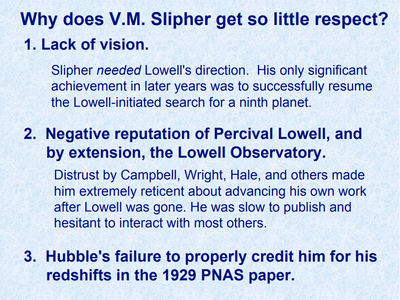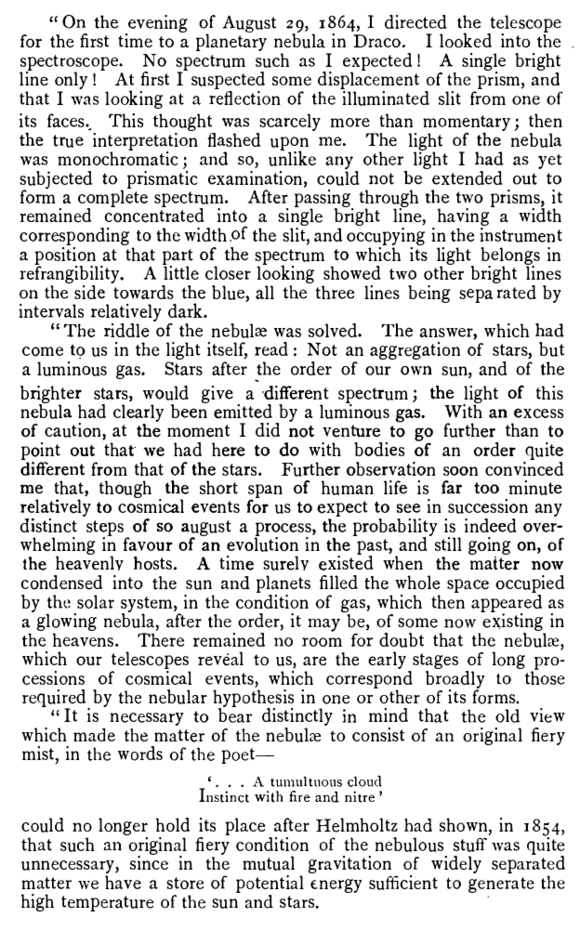Two photons everywhere
Many of the great things that Hubble did have been previously discovered by a shy, disregarded and lesser-known scientist. Meet Vesto Slipher, who dodged all opportunities at becoming famous, including the discovery of Pluto (predicted by his former boss and confirmed by his employee when he took over) and the recognition for the expansion of the Universe, which he had established a decade before the shaking report that would make Einstein recognize the biggest blunder of his life. I challenge you to remember his name tomorrow.Here is the conclusion slide of a tribute to Vesto:

He interests us for the duration of this text, for his discovery of the continuous spectra of certain gaseous nebulae.[1] It was already known (since Huggins) that nebulae could have spectra that were either continuous or with discrete lines, but the sensation was from the discrete lines, revealing that nebulae were gaseous (cosmic dust). The continuous spectrum was thought to correspond to many stars composing the nebula. This is how Huggins—the spectroscopist of stars—relates his discovery, as reported by William Watts in his beautiful book An introduction to the study of spectrum analysis:

It was, therefore, for Slipher to rediscover continuous spectra of the one and same nebulous object (not some superposition of disconnected stuff). The observation of continuous spectra was extended and generalized considerably by Hubble[2] a decade later, but also without concern for the physical origin.
Page[3] observed the first continuous spectra in the visible range. These could not be explained until Kipper[4] and Spitzer & Greenstein[5] independently understood it as a two-photon transition process. I could not find the original Kipper text but I did find [6]
A. JA. KIPPER:Astron. Zu. SSSR,27, 321 (1951)
References
- ↑ On the spectrum of the nebula in the Pleiades. V. M. Slipher in Low. Obs. Bull. 2:26 (1912).
- ↑ Template:Hubble22a
- ↑ The Continuous Spectra of Certain Planetary Nebulæ A Photometric Study. T. L. Page in Mon. Notices Royal Astron. Soc. 96:604 (1936).
- ↑ Template:Kipper51a
- ↑ Continuous Emission from Planetary Nebulæ. L. Spitzer Jr. and J. L. Greenstein in Ap. J. 114:407 (1951).
- ↑ Template:Kipper64a
